
“Welcome to the land time forgot,” uttered Sarah Troxell-Rhodes upon my arriving at the pleasantly windy, 360° view that's Galen Glen Winery. With life & work partner Galen Troxell, recently joined by their daughter Erin, it's become internationally recognized for varieties well suited to the continental climate and slate soils of Pennsylvania's Lehigh Valley--Riesling and Grüner Veltliner--notable as 15-20% of Pennsylvania's production is from grapes grown in this American Viticultural Area though “it struggles for an identity having not long ago being a destination for simple sweet wines”. Galen Glen mitigates the relative humidity of its growing season and subsequent mold pressures by allowing for wind flows and early leaf removal so botrytised wines are rare. With their farm's 83 acres in Troxell's family since 1830, the development of what's now 20 planted to vine was painstakingly slow. While he worked as a mechanical engineer in Germany, Sarah explored Baden's wine villages, stimulating a shared interest in wine, with her receiving mentoring from Geisenheim's Volker Schneider. Once in the US they experimented a decade growing hybrids then vinifera, and in 2003 established the US's second planting of GV. “It took us until 2012 for it to succeed, the protein unstable animal that it is,” exclaimed Galen. In addition to numerous delicious, minerally bottlings of still/dry Riesling and GV, Galen Glen also makes good Gewürztraminer, semi-dry Riesling and sparkling Brut Natural GV.
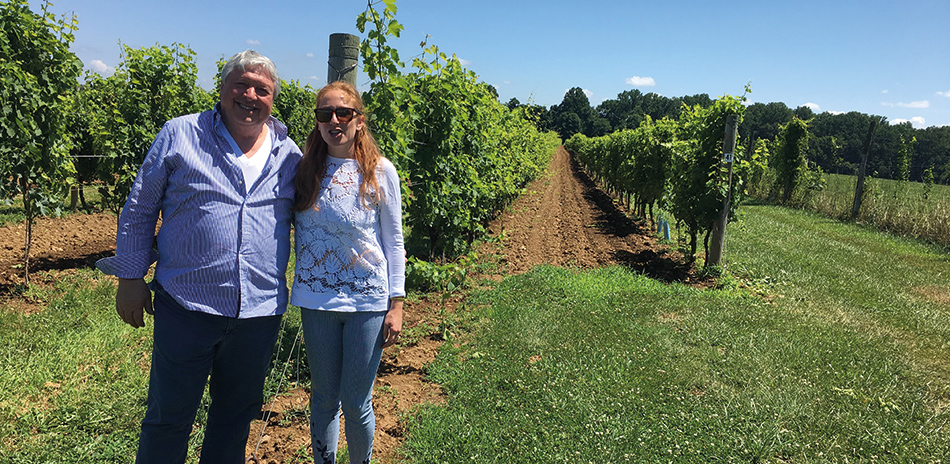
Pennsylvania wine's most prominent figure in its growth to an international standard is Gino Razzi whose influence may be found not only at his Penns Woods Winery but in the output of a handful of his fellow vintners. “Balance is my primary objective, I like my pH a little low in order to be crisp and quenching, a complete beverage,” a vibrancy which runs through the entirety of Penns Woods's wines. The successful importer of his native Italy's wines 2002 entry into production was from a vineyard of Bordeaux red varieties. “The wines were pretty good,” deciding to blend them into what he labelled Ameritage, later restructuring a 370ft. elevation loamy vineyard in the Brandywine Valley with Chardonnay planted in the stonier section along with Sauvignon Blanc, Muscat Canelli, Viognier, and Bordeaux reds. While contracting with Italian and Argentine consultants, in 2010 his daughter Carley left wine sales to run winery operations. Soon they purchased an additional 22 acres at 1000ft. upon which they planted Pinot Noir and more Bordeaux reds. “I haven't found any variety difficult to plant nor to make into good wine, but viticulture practice has to improve before the state finds its best direction. There's not enough of a tradition yet, and nobody has taken enough notes; we're now walking blindfolded through minefields,” he mused. “We're always changing, looking to improve.” While Razzi's Viognier, Chardonnay, reserves of Merlot and Cabernet Franc are all made with clear varietal expression even when placed alongside those from more famous US wine regions, his first basic vintage of notoriously finicky Pinot Noir, 2016, I thought amongst the best I'd tasted anywhere on the US east coast drawing compliments from a famous California winemaker with whom I shared a bottle--a remarkable first effort!
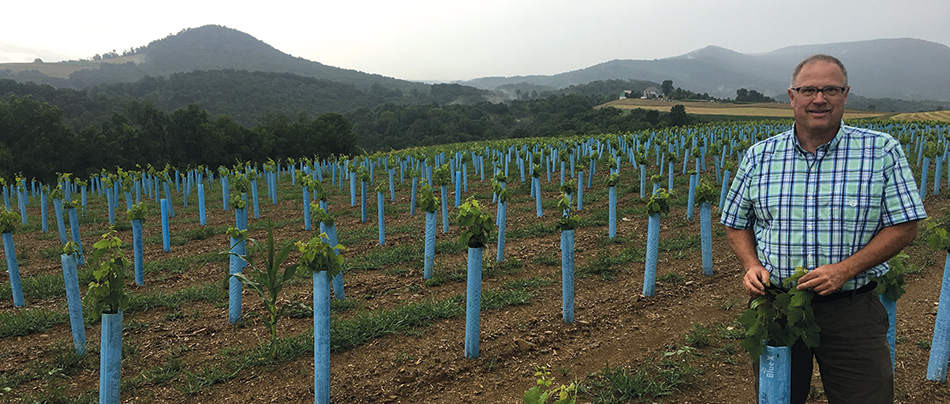
Fellow Keystone State wineries focused upon increasing quality include Stony Run whose Larry Shrawder has been mentored by Razzi. “Grüner absolutely loves PA,” he exclaimed. Shrawder's vineyard plantings range from 1992-2013. “We're looking to see what works out for varietal typicity and quality of the finished wine,” he said. Stony Run's inaugural 2016 vintage provided an exuberant Sauvignon Blanc of nettles and pink grapefruit with medium body and good length, its Cabernet Franc a generous raspberry nose and palate with medium heft and a moderate aging potential.
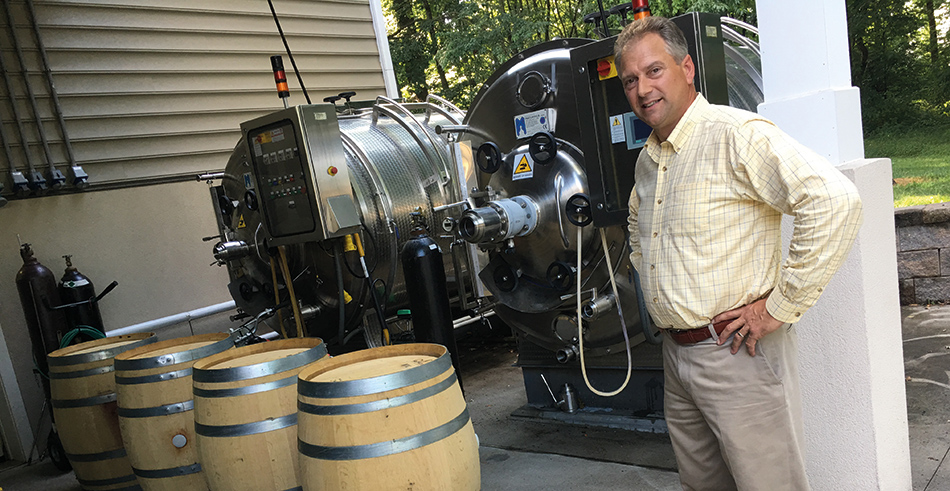
Sixth generation Lancaster County farmer Jan Waltz veered from tobacco into winegrowing in 1997 with Merlot and Cabernet Sauvignon, farmed now upon 34 acres which include Sauvignon Blanc, Semillon, Muscat Canelli, Chardonnay and Cabernet Franc. The self-taught winemaker with a chemistry degree watched what others did with his grapes before venturing on his own with the 2008 vintage. “It took a decade to learn and tweak the business, how to present ourselves beyond the standard of hybrid and American varietals.” Growing out of the consumer preference for simple sweet wines he eventually took Razzi's advice to persevere and “not look to the masses, to stick to making quality wine.” Merlot is Waltz's strong suit with both the 2013 and 2014 resting 20mos. in oak, smelling of ripe black cherry and molasses, possessing a balanced medium structure with firm tannins and good length.
A physician in the bio-pharma world, Brad Galer shifted careers when a well-drained silty-loam 15-acre site near his home became available. Noted US consultant Lucie Morton recommended high density plantings of Cabernet Franc, Petit Verdot, Albariño, Grüner and Vidal for a dry, clean, fresh, and light sparkler. Galen Glen's work with Grüner inspired Galer to plant it in 2015 alongside a 3.5 acre parcel of Chardonnay. “The region should be known for Cabernet Franc which is our go-to red ... my true love.” His 2015 spent 18 mos. in neutral French oak and has an herbaceous, smoky cherry nose with beautifully balanced, silky tannins, and a long and supple finish.
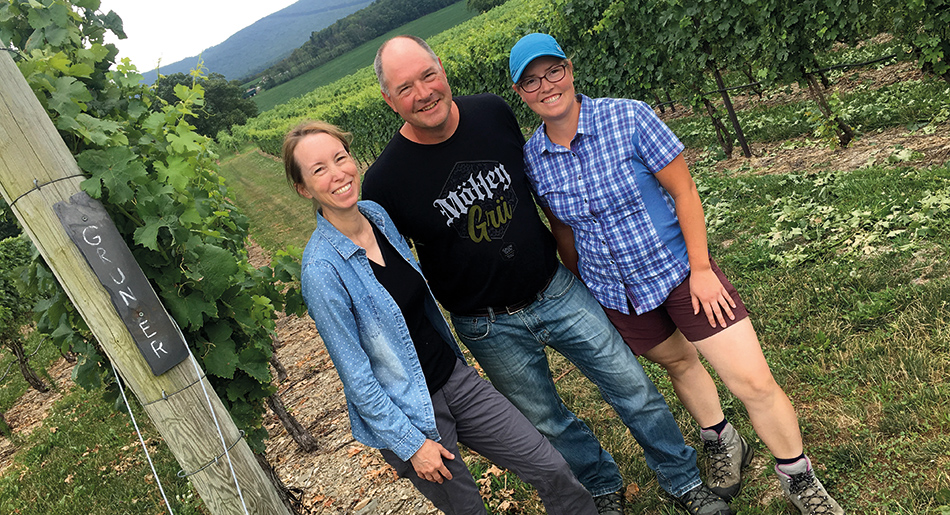
Vox Vineti, Latin for 'voice of the vineyard', is the home of Ed Lazzerini, a New Orleans native who in his 16th summer was taken by Francophile parents on a third trip to Burgundy when “I decided I wanted to be a vigneron. I'd tasted as early as 10 remembering the smell and taste of the wine--I'd never tasted anything like it. It's a 30 year dream realized here at Andrews Bridge.” The smallest PA producer I met producing 300 cases annually, his day job has him working out of home as a software engineer allowing him to enter the vineyard at whatever pace is necessary. “The biggest challenge in making good red wines here is providing sufficient water stress,” positing that Cabernet sauvignon's hydric sensitivity during veraison is why it doesn't perform as well as Franc and Merlot in the US mid-Atlantic. Lazzerini's 2016 Nebbiolo was picked late September (leading me to argue that had it been left longer on the vine it would've been far better) underwent 3 weeks maceration then 15 months in neutral French oak--tasting ripe, balanced, not aggressive; his 2015 Polyphony, a blend of Cabernets Franc and Sauvignon with a splash of Petit Verdot has a complex nose of deep black olive, smoke, cedar, and licorice; a lovely medium body, with great concentration and balance finishing a little shorter than I'd like but with dynamic acidity.
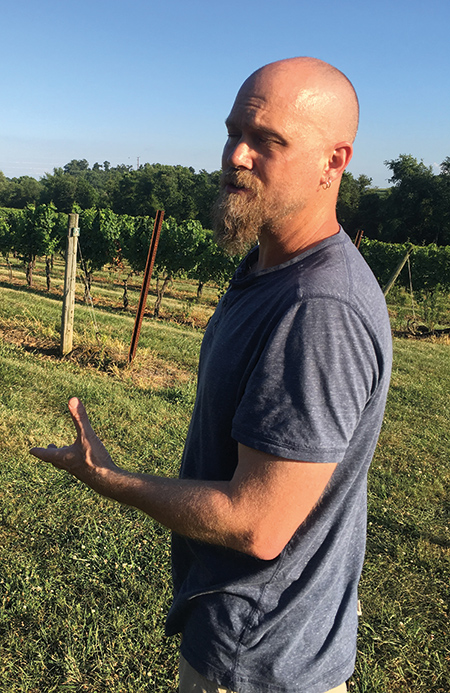
Carl Helrich acquired an existing winery and vineyard of low quantity and is now making over 200,000 bottles from his vineyard along with fruit sourced from other east coast sites while making the wines for several other operations. “I'm a 'brown juice' winemaker but I don't hyperoxidate; my focus is barrel work for reds and three versions of Chardonnay.” Located in low-lying clay-dominant York County with some quartz and schist allowing for good drainage when the clay isn't too heavy. “We've soils loaded with potassium which can cause imbalances in wines, something which plagues many east coast wineries as it can cause color and flavor instabilities,” reflecting upon Europe having already sorted these issues out over centuries. He treated me to the 2007 and 2013 vintages of his flagship Cadenza, a Bordeaux red blend of varying proportions, the older one showing no bricking but with an intriguing nose of stone and earth, ripe dried red fruits on the palate with brisk acidity--so delicious that I swallowed!
David Furer